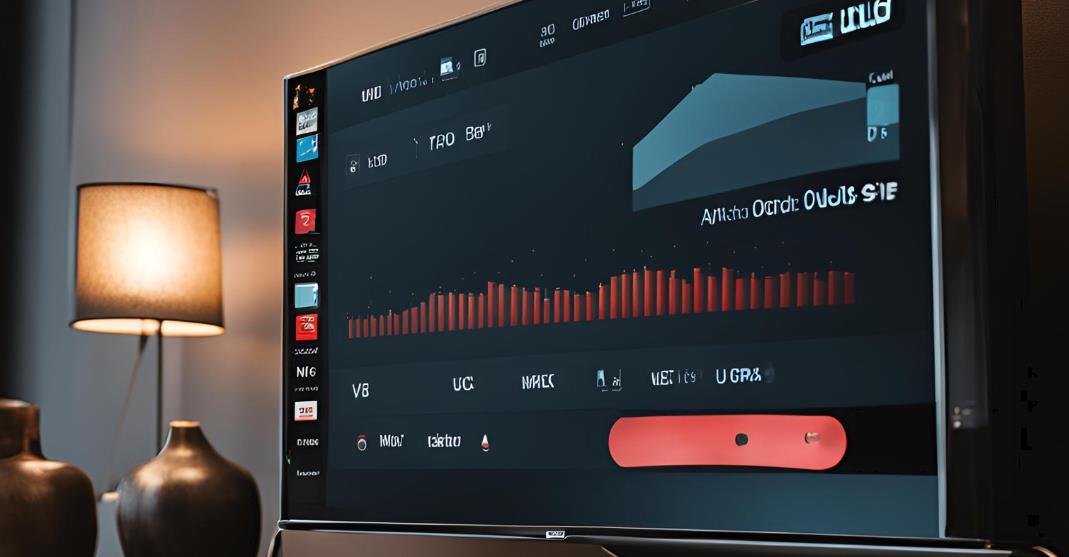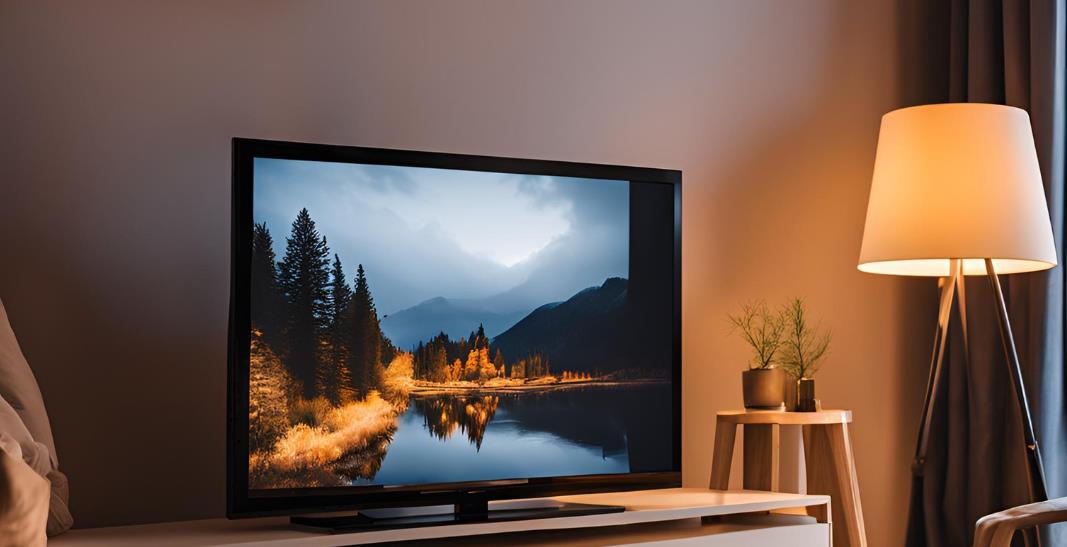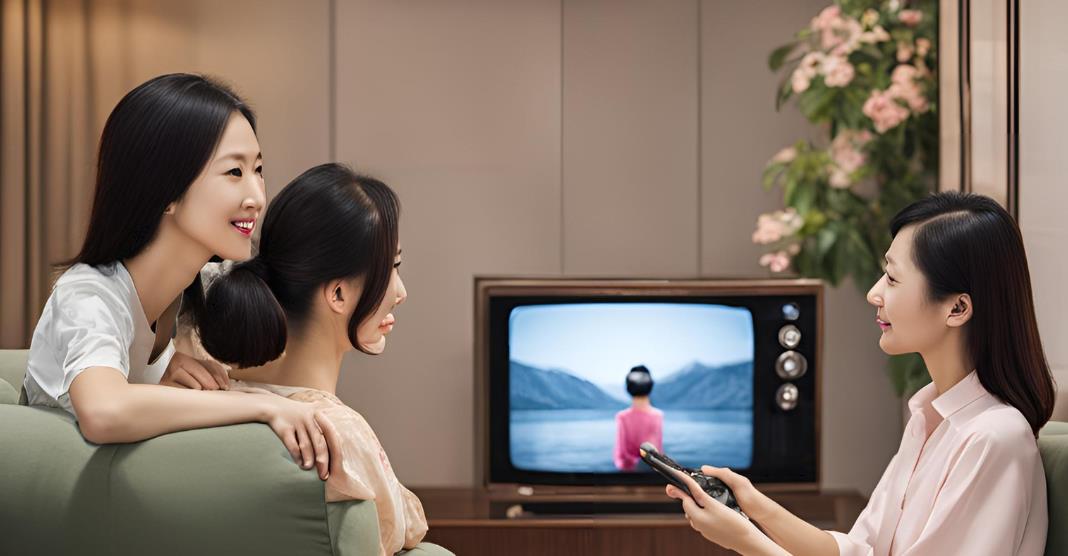Audio sync issues can be incredibly frustrating, particularly when you’re watching your favorite show or movie, and the sound doesn’t align with the picture. Insignia TVs, like many other smart televisions, can experience audio sync problems due to various reasons. This blog will walk you through the causes insignia tv audio out of sync, symptoms, and ensuring you enjoy a seamless viewing experience.
Understanding Audio Sync Problems in Insignia TVs
What Causes Audio Sync Issues?
Audio sync issues occur when the sound output from the TV doesn’t match the video being displayed. This discrepancy, often called “lip-sync error,” can range from a slight delay to a significant mismatch between the picture and sound. In most cases, the audio lag can be caused by a few factors including hardware malfunctions, software bugs, incorrect audio settings, or external devices causing interference.
In most cases, the audio lag can be caused by several factors including:
- Hardware malfunctions: Internal components of the TV might be failing.
- Software bugs: Outdated firmware or software may lead to performance issues.
- Incorrect audio settings: Misconfigured settings can affect sync.
- External device interference: Devices like cable boxes or gaming consoles can disrupt audio synchronization.
Common Symptoms of Audio Delay
- Lip-sync mismatch: The most common symptom is a delay between the lip movements of characters on the screen and the accompanying audio.
- Audio ahead of video: The audio might play before the corresponding actions happen on screen.
- Video ahead of audio: The video might appear before the related sounds are heard.
Impact on Viewing Experience
Types of Audio Sync Problems
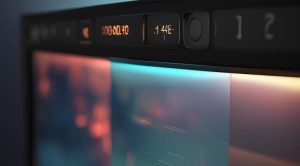
- Internal Sync Issues: Internal sync issues typically arise from malfunctions within the TV itself or its software. This can include problems such as software glitches, outdated firmware, or incorrect audio processing settings. When the TV’s audio processing lags behind the visual output, it creates a noticeable delay, resulting in the sound not matching the lip movements on screen. Additionally, features like sound enhancement or surround sound processing may inadvertently introduce latency, further exacerbating the issue. Regular software updates and factory resets can often resolve these internal problems, but persistent issues may indicate a deeper hardware malfunction requiring professional repair.
- External Sync Issues: External sync issues are caused by devices connected to the TV, such as cable boxes, gaming consoles, or streaming devices. These devices may experience delays in processing audio signals or could have their own audio settings that conflict with the TV’s settings. For example, a gaming console might prioritize graphic performance over audio processing speed, leading to a desynchronization effect during gameplay. Cable boxes may also have variable latency based on the quality of the signal received or the settings used for audio output. To mitigate these issues, users can check their device settings, ensure they are using high-quality cables, and troubleshoot connections between devices and the TV to maintain a smooth viewing experience.
Diagnosing the Root Cause
Quick Fixes for Insignia TV Audio Sync Issues
Restart Your Insignia TV
A simple reboot of your TV can often fix audio sync problems caused by temporary software glitches. Just turn off the TV, unplug it from the power source for 10-15 seconds, and then plug it back in. Its always better to restart your Insignia TV.
Just turn off the TV, unplug it from the power source for 10-15 seconds, and then plug it back in. It’s always better to restart your Insignia TV. This quick action refreshes the system and clears any minor bugs that may be affecting performance. If the problem persists after the restart, consider performing a more thorough reset of the TV to restore factory settings. This can help eliminate more stubborn issues that might not be resolved with a simple reboot. Regularly restarting your TV can also enhance overall performance and improve its responsiveness.
Check Cable Connections
Loose or faulty cables can contribute to audio sync issues. Ensure all HDMI, optical, or auxiliary cables are securely connected. If a cable is damaged, replacing it may resolve the problem.
Consider using high-quality cables that are compatible with your devices, as subpar cables can lead to signal degradation. Inspect all connections for any signs of wear or corrosion, which could affect performance. If possible, test with different cables to determine if the issue lies with a specific connection. Tightening connections or trying alternative ports can sometimes make a significant difference in syncing audio and video.
Adjust Audio Settings
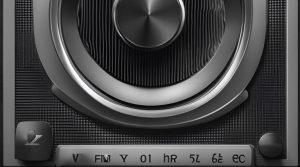
Insignia TVs have various audio settings that can be adjusted to fix sync problems. Go to the settings menu, and under “Audio,” check if the audio delay or lip-sync adjustment can solve the issue.
Experimenting with different audio modes, such as surround sound or stereo, may also affect how sound is processed. Be sure to take note of your current settings before making changes, so you can revert if necessary. If you’re using an external audio system, check its settings as well, since they can influence how audio is synced with the video. Don’t hesitate to consult the user manual for detailed instructions on optimizing audio settings specific to your Insignia TV model.
Update TV Firmware
Firmware updates often include bug fixes for audio and video performance. Make sure your Insignia TV’s firmware is up-to-date by navigating to the “System” settings and checking for available updates.
Keeping the firmware current not only improves audio sync but can also enhance overall functionality and add new features to your TV. If an update is available, follow the prompts to download and install it, which may take several minutes. After updating, perform a quick restart to ensure all changes are applied properly. Regularly checking for firmware updates can prevent future sync issues and maintain optimal performance over time.
Clear Cache and Reset Sound Settings
Advanced Troubleshooting Techniques
Using the Audio Sync Feature
Most Insignia TVs come with a built-in audio sync feature. This setting helps you manually adjust the delay between the audio and video. Access this through the TV’s sound settings menu and experiment with different values until the audio and video align.
Start with small adjustments, typically in increments of 10 to 20 milliseconds, to find the optimal sync. Once you find a setting that works, make a note of it for future reference, especially if the problem recurs. If necessary, consult the user manual for detailed instructions on how to navigate the audio sync feature on your specific model.
Adjusting Audio Output Format
If the audio format being output by the TV is incompatible with external devices, it can cause syncing problems. Go to the sound settings and switch to a different output format such as PCM instead of Dolby Digital to see if this resolves the issue. Be aware that changing the audio output format might affect sound quality or features like surround sound, so test the audio after making changes.
If switching formats improves the sync, consider checking whether your external devices support the selected format. It might also be beneficial to check for updates or settings on external devices that can help enhance compatibility with your TV’s output formats.
Checking External Device Settings
Ensure that any connected device, such as a cable box or gaming console, is configured correctly for audio output. Check the audio settings on those devices and look for options like “Lip-Sync” or “Audio Delay” adjustments. If available, enable any lip-sync features that may help automatically align the audio with the video. Additionally, confirm that the firmware for these devices is updated to the latest version, as updates often fix bugs related to audio syncing. Testing different HDMI ports on your TV can also help identify if the issue is isolated to a particular connection or device.
Testing with Different Content Sources
Test different types of content (streaming services, Blu-ray discs, live TV, etc.) to determine if the audio sync issue persists across all media. If it only happens on specific content, the issue could be with the source rather than the TV.
Pay attention to whether the problem occurs consistently with particular shows or movies, as some streams might have inherent sync issues due to encoding. You may want to try playing content from different streaming apps or using different sources to isolate the problem further. If syncing issues arise primarily with live broadcasts, consider checking for any known network issues affecting transmission quality.
Verifying TV Speaker Functionality
Ensure that your TV’s internal speakers are functioning correctly by checking the sound output with external speakers or headphones. This helps to rule out speaker malfunctions as the root cause of the sync problem. If the audio sync issue persists with external speakers, it further indicates that the problem may lie in the TV’s audio processing rather than the speakers themselves.
The test the TV with a variety of audio sources to see if the problem is consistent across all types of output. If you notice that the sync problem only occurs with certain audio setups or connections, it could point to compatibility issues that need addressing.
Addressing Hardware-Related Sync Problems
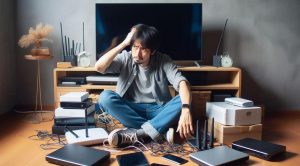
Inspecting HDMI Cables and Ports
Faulty or outdated HDMI cables can cause signal interference, leading to audio sync issues. Ensure you’re using high-quality, compatible HDMI cables and test different HDMI ports on your TV. Inspect each HDMI cable for physical damage, such as fraying or bent connectors, which can disrupt signal quality.
If possible, try using a different cable altogether to determine if the original one was the cause of the problem. Remember that older HDMI standards may not support higher audio formats, so upgrading to a newer HDMI version could improve performance. Also confirm that all connections are snug, as even minor gaps can lead to signal loss.
Examining the TV’s Sound Board
Internal hardware issues, like a malfunctioning sound board, could cause the audio to lag. If other troubleshooting steps fail, it may be worth having a technician inspect the TV’s internal components.
ymptoms of sound board issues might include crackling sounds or intermittent audio loss, which can help narrow down the problem. Technicians can perform diagnostic tests to determine if the sound board is functioning properly or if it needs repair or replacement. If your TV is still under warranty, check with the manufacturer for repair options, as it could save you money. Regular maintenance checks can help prevent sound board issues from developing in the first place.
Checking for Loose Internal Connections
If your TV has experienced a fall or has been moved recently, loose internal connections could be causing the problem. Professional service might be required to resecure these connections. Technicians can safely open the TV to inspect the internal components and ensure that all connectors are tight and functioning as intended.
If you’re comfortable with basic electronics, some individuals may attempt to inspect the TV themselves, but caution is advised as this can void warranties. Observing any signs of physical damage or unusual noises when the TV is powered on can also indicate internal connection issues. Proper handling and transportation of your TV can minimize the risk of these problems arising in the future.
Software Solutions for Audio Sync Issues
Updating TV Operating System
Like firmware updates, operating system updates may include fixes for known audio issues. Regularly check for system updates in the TV’s settings to ensure your device is running the latest version. These updates can enhance overall performance, introduce new features, and resolve glitches that may affect audio and video sync. To find the update option, navigate to the “Settings” menu, then look for “About” or “System Updates.” If an update is available, follow the on-screen prompts to download and install it. Keeping your TV’s operating system up to date can prevent many common issues and improve compatibility with various content formats.
Reinstalling Audio Drivers
Corrupted audio drivers can cause sync issues, disrupting your viewing experience. Reinstalling them could resolve the problem and restore proper audio functionality. While Insignia TVs don’t always have manual audio driver updates, some smart TVs allow for a reset of audio drivers through the settings. To do this, navigate to the “Settings” menu and look for an option related to audio or sound settings, which may include a “Reset” function. After resetting, it’s beneficial to test the audio output to ensure the issue has been resolved. If problems persist, consider reaching out to customer support for assistance or guidance on further steps.
Resetting Smart TV Apps
If the issue only occurs while using streaming apps, resetting or reinstalling those apps might solve the problem. Many smart TVs provide the option to uninstall and reinstall apps through the app store or the main settings menu. This process can clear any corrupt data or glitches that might be affecting audio sync. Additionally, check for updates for each app, as developers frequently release patches to improve performance and fix bugs. After reinstalling the app, log back in and test the audio to see if the sync issue is resolved. If problems persist across multiple apps, it may indicate a broader issue with the TV’s software or settings.
Clearing System Cache
Clearing the system cache can resolve temporary bugs that cause sync delays, improving overall performance. This option is usually found under the “Storage” or “System” menu in your TV’s settings. By removing cached data, you can free up space and potentially eliminate corrupted files that interfere with audio processing. After clearing the cache, restart your TV to allow it to rebuild the cache with fresh data. It’s a simple yet effective way to troubleshoot many common issues. Regularly clearing the cache can help maintain your TV’s responsiveness and ensure a smoother viewing experience.
Performing a Factory Reset
As a last resort, performing a factory reset will return the TV to its default settings, potentially resolving persistent sync issues. Before proceeding, be sure to back up any important data, as this process will erase all custom settings, preferences, and installed apps. To initiate a factory reset, navigate to the “Settings” menu, usually under “System” or “About.” Follow the prompts carefully, as you may need to confirm your choice multiple times. After the reset, the TV will reboot, allowing you to set it up as if it were new. While this can be a time-consuming process, it can often resolve deeper software issues that other troubleshooting steps failed to address.
External Devices and Audio Sync
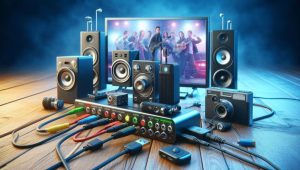
Troubleshooting Cable/Satellite Box Sync Issues
If you’re using a cable or satellite box, ensuring its audio settings are correctly configured to match the TV is essential. Start by checking the audio output settings on the box to confirm they align with your TV’s capabilities, as discrepancies can lead to sync issues. Look for options related to audio delay or lip-sync in the box’s settings, which can often help fine-tune the synchronization between audio and video. Additionally, ensure that the connections between your cable/satellite box and the TV are secure, as loose connections can contribute to these problems. If you continue to experience issues, consider performing a reset on the cable box, which can often resolve temporary glitches and restore proper function.
Fixing Sync Problems with Gaming Consoles
Gaming consoles often come equipped with built-in audio settings for sync correction, which can help mitigate audio delays during gameplay. Navigate to the audio output menu on your console to explore these settings, where you might find options for adjusting audio delay or enabling features designed to improve synchronization. Be sure to also check the settings of the game itself, as some titles allow you to adjust audio settings independently. If problems persist, restarting both the console and the TV can clear temporary glitches that may be affecting performance. Additionally, using a wired connection instead of Wi-Fi for online gaming can sometimes enhance performance and reduce lag, contributing to a more synchronized audio-visual experience.
Addressing Soundbar and Home Theater Sync
Soundbars and home theater systems typically feature their own audio delay settings, which can impact the overall sync between the audio and video output. To ensure optimal performance, check the audio delay settings on both the sound system and the TV, making necessary adjustments to synchronize them effectively.
Many sound systems allow you to customize the audio delay in milliseconds, which can help fine-tune the timing based on your specific setup and room acoustics. It’s also advisable to consult the user manuals for both devices, as they often provide guidance on the best settings for synchronization. If you continue to experience issues, consider testing the soundbar or home theater system with different content sources to determine if the sync problem is isolated to a particular device or input.
Resolving Streaming Device Audio Delays
When using a streaming device like Roku or Fire TV Stick, ensure its firmware is up-to-date, as updates often include fixes for audio sync issues. Navigate to the device’s settings to check for any available updates and install them to maintain optimal performance. Additionally, adjust the audio settings within the streaming device, as many offer built-in audio sync features or options for adjusting the audio output format, which can significantly impact synchronization.
If the audio delay persists, try disconnecting and reconnecting the streaming device to the TV, which can sometimes reset the connection and resolve issues. It can also be helpful to test the streaming device with different applications to see if the sync issue occurs universally or is confined to specific services.
Synchronizing Bluetooth Audio Devices
Bluetooth devices can introduce a slight delay in audio output, making synchronization challenging, especially during video playback. If you’re experiencing noticeable lag with Bluetooth speakers or headphones, try reducing the audio delay through the TV’s sound settings, as many modern TVs include options to adjust sync specifically for Bluetooth connections. Additionally, ensure that the Bluetooth device is fully charged and updated, as firmware issues on the device can contribute to lag. If possible, switch to a wired connection, which generally provides more stable and immediate audio transmission, thereby eliminating the latency associated with Bluetooth. Lastly, consider minimizing the distance between the TV and Bluetooth device, as greater distances can result in signal interference and further delays.
Advanced Audio Settings for Perfect Sync
Utilizing Auto Lip Sync Feature
The Auto Lip Sync feature is specifically designed to automatically adjust audio delays based on real-time analysis of the video signal, ensuring that dialogue matches the lip movements on screen. To take advantage of this setting, navigate to your TV’s audio menu and verify that the Auto Lip Sync option is enabled. This feature is particularly useful when using external sound systems, as it can compensate for any processing delays introduced by those devices.
It’s important to note that some TVs might require you to pair them with compatible external devices for the Auto Lip Sync to function correctly. Regularly checking and updating both your TV and external devices can help maintain this feature’s effectiveness, as software updates may enhance compatibility and performance.
Adjusting Audio Delay Manually
Many TVs, including Insignia models, allow you to manually adjust the audio delay. Use this feature to fine-tune the synchronization based on the severity of the lag.
Once in the settings menu, look for an option labeled “Audio Delay” or “Lip Sync” where you can increase or decrease the audio delay in milliseconds. Start with small adjustments to find the optimal setting based on your viewing experience. If the lag varies between different types of content, consider creating presets for various sources, such as streaming, cable, or gaming, allowing for quick adjustments as needed.
Optimizing Audio Output Settings
When using external speakers or a home theater system, ensuring that the audio output format is correctly configured is crucial for achieving optimal sound quality and synchronization. Check the audio output settings on your TV to see whether you are using formats like PCM or Dolby Digital, and ensure that they match the capabilities of your external sound system. Incorrect audio output formats can lead to compatibility issues, resulting in sync problems or degraded audio quality. If your setup supports it, select the format that provides the best sound experience for your content type, whether it’s movies, music, or games. Regularly testing different formats can help you find the ideal setting for your specific configuration.
Configuring Advanced EQ Settings
Equalizer (EQ) settings can significantly impact how audio is processed and perceived, which may indirectly affect sync issues. Some users may find that particular EQ settings cause delays or distortions in sound, leading to a noticeable gap between audio and video. Experimenting with the various EQ presets available—such as “Movie,” “Music,” or “Sports”—can help you identify settings that improve overall audio clarity and timing. If you’re unsure which settings work best, consider reverting to the default EQ settings to see if sync issues persist. It’s also beneficial to perform these adjustments in conjunction with different types of content, as the optimal EQ settings can vary based on the specific audio characteristics of each media type.
Using Audio Passthrough Options
Enabling audio passthrough can significantly reduce processing delays, ensuring that the audio output remains in sync with the video. Audio passthrough allows the original audio signal to bypass the TV’s internal processing and be sent directly to an external sound system, minimizing the delay introduced by the TV’s audio processing. To activate this feature, navigate to the audio settings on your TV and look for options related to passthrough or bitstream audio output. It’s important to ensure that your external audio system supports passthrough and that the settings match the audio format being transmitted. Testing audio passthrough with various content sources can help verify that it delivers the expected synchronization benefits and audio quality improvements.
How to Prevent Future Audio Sync Issues

Regular Maintenance Tips
Regular maintenance of your Insignia TV is crucial for preventing audio sync issues and ensuring optimal performance. Clean the TV’s vents and ports regularly to avoid overheating, which can affect sound processing. Dust buildup can obstruct airflow, leading to increased internal temperatures that may compromise audio clarity. Check for and install firmware updates, as they often contain fixes for known audio problems and enhancements to overall functionality. Additionally, ensure all cables are securely connected, and replace any worn or damaged cables to maintain a stable audio-visual connection. Regularly inspecting the physical condition of your cables can help prevent signal loss or interference, contributing to a smoother viewing experience.
Optimal TV and Audio System Setup
Ensure your TV and audio devices are properly set up and connected. Start by placing your speakers and TV at optimal distances to create a balanced soundstage. Avoid mixing different audio formats and devices that may not be compatible, as this can lead to future sync problems. Utilizing a unified audio format across all devices helps maintain consistent performance. Consider calibrating your audio settings to match your environment; sometimes, small adjustments can make a significant difference in sound synchronization.
Keeping Firmware and Apps Updated
Regularly check for software and firmware updates for your TV, sound system, and external devices. Keeping all components updated ensures that known bugs are fixed and performance is optimized. Updates can also introduce new features and improvements that enhance the user experience. Enable automatic updates whenever possible to minimize the chances of missing critical patches that address audio sync issues.
Best Practices for Cable Management
Avoid tangled or damaged cables by practicing good cable management. Use cable ties or clips to keep cables organized and out of sight, reducing clutter and the risk of accidental disconnection. Securely connecting cables and avoiding interference from other electronic devices can help reduce the chances of future audio sync issues. Additionally, routing cables away from power sources and other electronics can minimize electromagnetic interference, which can disrupt signal integrity.
Monitoring and Addressing Early Signs of Sync Problems
If you notice slight audio delays or glitches, addressing them early can prevent them from worsening. Stay aware of minor issues that may escalate into larger sync problems. Make it a habit to perform regular audio-visual checks, particularly after firmware updates or changes to your setup. If audio sync issues arise, try resetting your devices or re-establishing connections before they become more pronounced. Early intervention not only enhances your viewing experience but also prolongs the lifespan of your devices by ensuring they operate under optimal conditions.
When to Seek Professional Help
- Identifying Persistent Sync Issues: If you’ve tried all troubleshooting steps and still experience persistent audio sync issues, it may be time to consult a professional.
- Finding Authorized Insignia TV Repair Services: Locate an authorized repair service for your Insignia TV if the issue seems hardware-related or beyond your ability to fix. Ensure the service provider is experienced with Insignia TVs to avoid potential damage.
- Understanding Warranty Coverage for Audio Problems: Check your TV’s warranty for coverage on audio issues. Many manufacturers, including Insignia, may offer free repairs or replacements for TVs under warranty if a hardware issue is causing the sync problem.
- Preparing for a Professional Diagnosis: When consulting a technician, provide detailed information about the sync issue. Note when the problem occurs, the types of content affected, and any troubleshooting steps you’ve already tried. This information can help with a quicker diagnosis.
- Weighing Repair Costs vs. Replacement Options: If repairs are costly or the TV is an older model, you might consider replacing the TV altogether. Weigh the cost of repair against purchasing a new TV, especially if a warranty no longer covers your device.
Here’s a comparison table that outlines the audio performance and synchronization features of different Insignia TV models, alongside a general overview of how Insignia stacks up against other brands in audio synchronization.
| Feature/Model | Insignia NS-55DF710NA21 | Insignia NS-39DF310NA21 | Insignia Fire TV Edition | Other Brands (e.g., Samsung, LG) |
|---|---|---|---|---|
| Audio Sync Performance | Moderate sync performance; occasional delay noted. | Prone to sync issues, especially with older content. | Improved sync; better with streaming services. | Generally strong audio sync performance across models. |
| Audio Technologies | Standard stereo output; lacks advanced audio features. | Basic audio features; minimal enhancements. | Dolby Audio support for better sound quality. | Advanced audio technologies like Dolby Atmos available. |
| HDMI Support | HDMI 2.0; does not support ALLM. | HDMI 1.4; limited audio features. | HDMI 2.0; some support for gaming consoles. | HDMI 2.1 in higher-end models; supports ALLM. |
| User Satisfaction Ratings | 3.8/5 based on audio feedback; some complaints about lag. | 3.5/5; lower ratings due to audio issues. | 4.2/5; generally positive for audio and video sync. | Higher ratings (4.5/5+) for sound quality and sync performance. |
| Additional Features | Basic sound settings; EQ adjustments available. | Very limited sound settings. | Enhanced audio settings via Fire TV interface. | Rich audio features; customizable sound profiles. |
| Future Updates | Limited software updates; potential for minor fixes. | No planned updates; older model. | Regular updates through Fire TV for performance improvements. | Continuous support and updates for audio features. |
Key Insights:
- Audio Sync Performance: Insignia models may experience varying degrees of audio sync issues, particularly in lower-end models.
- Comparison with Other Brands: Other brands often provide superior audio synchronization, advanced technologies, and better user ratings, making them a reliable choice for consumers focused on audio performance.
- Technological Advancements: Newer models, especially those featuring HDMI 2.1, benefit from technologies like ALLM, significantly improving audio synchronization and reducing delays.
- Customer Feedback: It’s crucial to check user reviews for specific models to assess their audio performance and satisfaction levels, as this can highlight common issues or improvements in newer versions.

Expert Tips for Optimal Audio-Visual Experience
Calibrating your TV’s picture and sound settings can significantly enhance audio-visual sync performance. For optimal results, consider hiring a professional to perform the calibration or use available tools to fine-tune your settings yourself. Additionally, selecting the right audio equipment is crucial for an immersive viewing experience. Whether you opt for a soundbar, a home theater system, or standalone speakers, ensure they are compatible with your Insignia TV and designed to minimize potential sync issues.
Creating an ideal viewing environment is another important factor; an acoustically optimized room can help reduce sound reflections and echoes that may worsen perceived sync problems. Furthermore, understanding the various audio formats—such as PCM, Dolby Digital, and DTS—can impact your audio sync. Each format has its own strengths and weaknesses, so being aware of these can help you choose the one that provides the best performance with your TV and external devices. Lastly, take the time to explore and maximize your Insignia TV’s built-in audio features, such as virtual surround sound and equalizer settings. Properly configuring these enhancements ensures you achieve the best possible sound quality while minimizing delay, resulting in a more enjoyable viewing experience.
Troubleshooting Specific Content Types
- Fixing Audio Sync in Live Broadcasts: Live broadcasts often introduce a degree of audio delay. Adjust your TV’s lip-sync settings or try using an external sound system to improve sync during live content.
- Addressing Sync Issues in Streaming Services: If streaming apps like Netflix, Hulu, or Prime Video show sync issues, try clearing the app cache or updating the app. You can also check the streaming quality settings to reduce buffering delays.
- Resolving Audio Delays in Recorded Content: Audio sync issues can also occur when watching recorded content. Ensure that the recorded media is in a format compatible with your TV and try adjusting audio delay settings to resolve the issue.
- Syncing Audio for Different Video Formats: If you’re playing a variety of video formats (MP4, MKV, AVI, etc.), ensure that your TV supports the format properly. Some formats may require additional processing that could introduce audio delays.
- Dealing with Audio Sync in Multi-Language Content: For multi-language or dubbed content, audio sync issues are common. Check if adjusting the audio track or using the original language audio resolves the issue, as some dubbed tracks may not sync perfectly.
Community Solutions and User Experiences
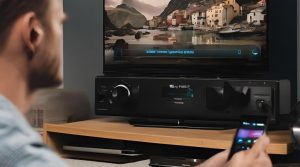
Future-Proofing Your Insignia TV Setup
Stay informed about emerging audio synchronization technologies like HDMI 2.1 and advanced audio processing chips, which aim to eliminate sync issues in future TVs. Ensure compatibility between your Insignia TV, smart hub, and audio devices as smart home integration becomes more common to prevent new audio challenges. Adapt to new broadcasting standards and streaming codecs to maintain audio processing compatibility. Invest in future-proof audio equipment that aligns with evolving synchronization technologies. Regularly check for official Insignia updates and firmware patches to address any audio sync concerns. Staying proactive will help ensure your TV continues to deliver an optimal viewing experience.
FAQs on Insignia TV Audio
Why does my Insignia TV audio suddenly go out of sync?
Several factors can cause this, including software bugs, incorrect audio settings, or external devices. Restarting your TV or adjusting audio delay settings often resolves the issue.
How do I fix lip-sync issues with my Insignia TV?
You can adjust the lip-sync or audio delay settings in your TV’s sound menu. Additionally, ensure all cables are securely connected, and the firmware is up to date.
Does resetting the TV solve audio sync problems?
Yes, performing a factory reset can fix persistent sync problems by restoring default settings. However, this should be a last resort after other troubleshooting steps.
Can external devices cause audio sync issues?
Yes, devices such as soundbars, cable boxes, and gaming consoles can introduce audio delays. Ensure all external devices are properly configured for the best sync performance.

